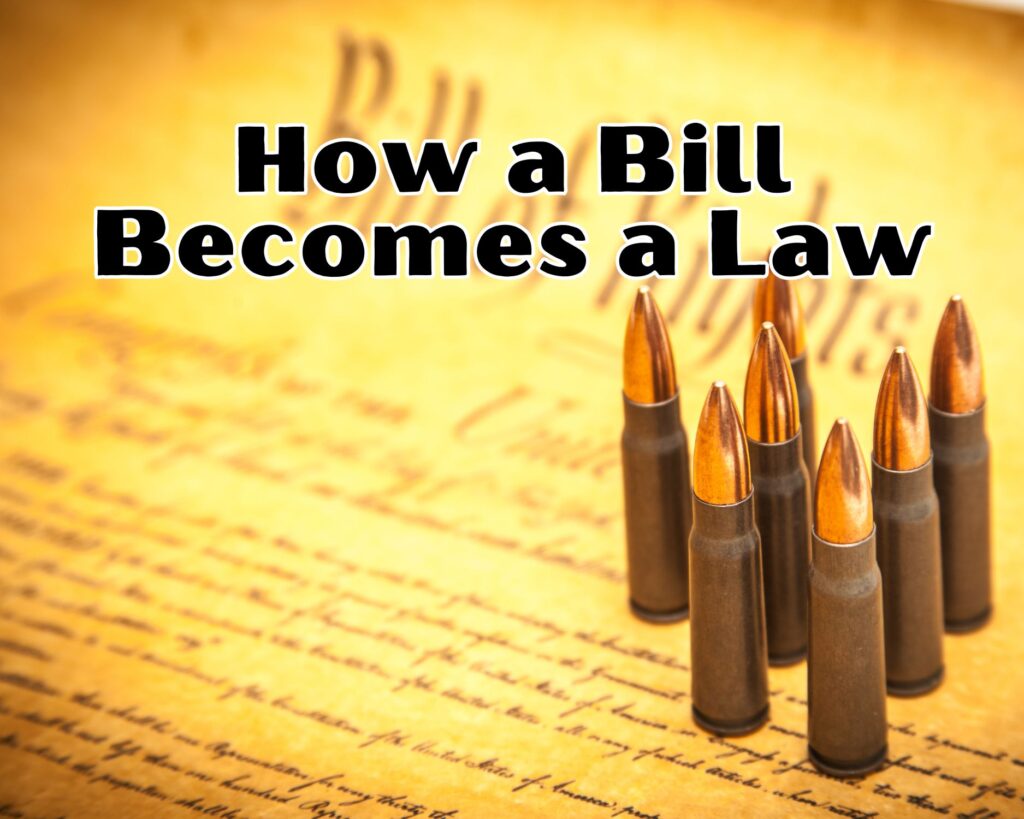The journey of a bill from its inception to becoming a law is a complex and fascinating process. To understand this journey clearly, a flowchart can be an invaluable tool. This article will outline the steps involved in how a bill becomes a law in the United States, presented in a flowchart format for easy comprehension.

The Journey of a Bill: A Step-by-Step Flowchart
1. Bill Introduction
- Origin: A bill is first drafted and introduced by a member of Congress, either in the House of Representatives or the Senate.
- First Step: The bill is assigned a number (e.g., H.R. for House bills, S. for Senate bills) and referred to a relevant committee.
2. Committee Action
- Review: The committee reviews, amends, and debates the bill.
- Decision: The committee decides whether to pass the bill back to the chamber floor or table it.
3. Floor Action in Originating Chamber
- Debate: If approved by the committee, the bill is debated by the entire chamber (House or Senate).
- Vote: The chamber votes on the bill. If passed, it moves to the other chamber.
4. Action in the Opposite Chamber
- Similar Process: The bill goes through a similar process in the other chamber (House if it originated in the Senate and vice versa).
- Approval or Amendments: The second chamber may approve the bill as is or make amendments.
5. Conference Committee (If Needed)
- Reconciliation: If there are differences between the House and Senate versions, a conference committee made up of members from both chambers meets to reconcile them.
- Final Version: The committee prepares a final version of the bill.
6. Final Approval by Both Chambers
- Vote on Final Version: Both the House and the Senate vote on the final version of the bill.
- Passage: If both chambers pass the bill, it is sent to the President.
7. Presidential Action
- President’s Decision: The President can either sign the bill into law, veto it, or take no action.
- Veto Override: If the President vetoes the bill, Congress can override the veto with a two-thirds vote in both chambers.
8. Bill Becomes a Law
- Enactment: If signed by the President or if the veto is overridden, the bill becomes law.
- Publication: The law is codified and published.
Understanding how a bill becomes a law is crucial for comprehending the legislative process in the United States. This flowchart provides a simplified overview of the complex journey a bill undertakes before it becomes a law. For those interested in more detailed aspects of the legislative process or other related topics, exploring resources and articles on LegalKnowItAll.com can provide further insights and information. The legislative process, while intricate, is a fundamental aspect of how policy and change are enacted in the country.
The process of how a bill becomes a law, as outlined in the flowchart, is just one aspect of the broader legislative and legal system. For those interested in diving deeper into these topics, LegalKnowItAll.com offers a range of articles that can enhance understanding and provide further insights.
Related Topics on LegalKnowItAll.com
- Legal Education and Careers: For those inspired by the legislative process and considering a career in law, the article 🌟 Kim Kardashian and Law School: A Journey Through Legal Education 🌟 provides an interesting perspective on non-traditional paths to legal studies.
- Understanding Legal Concepts: To grasp the complexities of laws and their implications, it’s beneficial to understand basic legal concepts. The article 🌟 Understanding Battery in Legal Terms 🌟 offers a clear explanation of a common legal term, which can be a good starting point for those new to legal studies.
The Importance of Legal Knowledge
Understanding the legislative process is crucial for several reasons:
- Informed Citizenship: Knowing how laws are made helps citizens engage more effectively in the democratic process.
- Legal Advocacy: For those interested in advocacy or legal reform, understanding the process is key to effectively influencing change.
- Career Development: For aspiring lawyers, politicians, or public policy experts, this knowledge is foundational to their professional development.
Further Exploration
The legislative process is interconnected with various aspects of law and governance. Exploring related topics can provide a more comprehensive understanding of how laws shape society. Articles on legal theory, public policy, and specific legal cases can offer valuable insights.
What Is the First Step in the Process of a Bill Becoming a Law?
The first step is the drafting and introduction of the bill. A member of Congress, either in the House of Representatives or the Senate, drafts the bill and introduces it to their respective chamber. The bill is then assigned a number and referred to a relevant committee for review.
Who Can Introduce a Bill?
In the United States, only members of Congress (Senators and Representatives) can introduce a bill. However, the idea for a bill can come from anyone, including citizens, interest groups, or the President.
What Happens in the Committee Stage?
In the committee stage, the bill is closely examined, debated, and possibly amended. The committee decides whether the bill should move forward to the full chamber for debate. If a committee decides not to move a bill forward, it is typically the end of the line for that bill.
How Is a Bill Passed in the House or Senate?
For a bill to pass in either the House of Representatives or the Senate, it must receive a majority vote. In the House, this means at least 218 out of 435 Representatives must vote in favor, and in the Senate, at least 51 out of 100 Senators must vote in favor.
What Happens if the House and Senate Pass Different Versions of a Bill?
If the House and Senate pass different versions of a bill, a conference committee made up of members from both chambers is formed to reconcile the differences. The committee prepares a final version of the bill, which must then be approved again by both chambers.
What Are the President’s Options Once a Bill Reaches Their Desk?
The President can take one of three actions:
- Sign the bill into law.
- Veto the bill, sending it back to Congress with reasons for the veto.
- Take no action. If Congress is in session, the bill automatically becomes law after 10 days without a signature. If Congress adjourns before the 10 days and the President has not signed, the bill does not become law (a “pocket veto”).
Can Congress Override a Presidential Veto?
Yes, Congress can override a presidential veto by a two-thirds vote in both the House and the Senate. If successful, the bill becomes law despite the President’s veto.
How Long Does the Process of Passing a Bill Take?
The time it takes for a bill to become a law can vary greatly. Some bills pass quickly, within a few months, while others can take several years. The process is often lengthy due to the detailed review and multiple stages of approval required.
Is Every Introduced Bill Guaranteed to Become a Law?
No, not every introduced bill becomes a law. In fact, most bills do not make it through the entire process. They may be stalled or rejected at various stages, such as during committee review or floor voting.
What Is the First Step in the Process of a Bill Becoming a Law?
The first step is the drafting and introduction of the bill. A member of Congress, either in the House of Representatives or the Senate, drafts the bill and introduces it to their respective chamber. The bill is then assigned a number and referred to a relevant committee for review.
Who Can Introduce a Bill?
In the United States, only members of Congress (Senators and Representatives) can introduce a bill. However, the idea for a bill can come from anyone, including citizens, interest groups, or the President.
What Happens in the Committee Stage?
In the committee stage, the bill is closely examined, debated, and possibly amended. The committee decides whether the bill should move forward to the full chamber for debate. If a committee decides not to move a bill forward, it is typically the end of the line for that bill.
How Is a Bill Passed in the House or Senate?
For a bill to pass in either the House of Representatives or the Senate, it must receive a majority vote. In the House, this means at least 218 out of 435 Representatives must vote in favor, and in the Senate, at least 51 out of 100 Senators must vote in favor.
What Happens if the House and Senate Pass Different Versions of a Bill?
If the House and Senate pass different versions of a bill, a conference committee made up of members from both chambers is formed to reconcile the differences. The committee prepares a final version of the bill, which must then be approved again by both chambers.
What Are the President’s Options Once a Bill Reaches Their Desk?
The President can take one of three actions:
- Sign the bill into law.
- Veto the bill, sending it back to Congress with reasons for the veto.
- Take no action. If Congress is in session, the bill automatically becomes law after 10 days without a signature. If Congress adjourns before the 10 days and the President has not signed, the bill does not become law (a “pocket veto”).
Can Congress Override a Presidential Veto?
Yes, Congress can override a presidential veto by a two-thirds vote in both the House and the Senate. If successful, the bill becomes law despite the President’s veto.
How Long Does the Process of Passing a Bill Take?
The time it takes for a bill to become a law can vary greatly. Some bills pass quickly, within a few months, while others can take several years. The process is often lengthy due to the detailed review and multiple stages of approval required.
Is Every Introduced Bill Guaranteed to Become a Law?
No, not every introduced bill becomes a law. In fact, most bills do not make it through the entire process. They may be stalled or rejected at various stages, such as during committee review or floor voting.
As an Amazon Associate we earn from qualifying purchases through some links in our articles.




